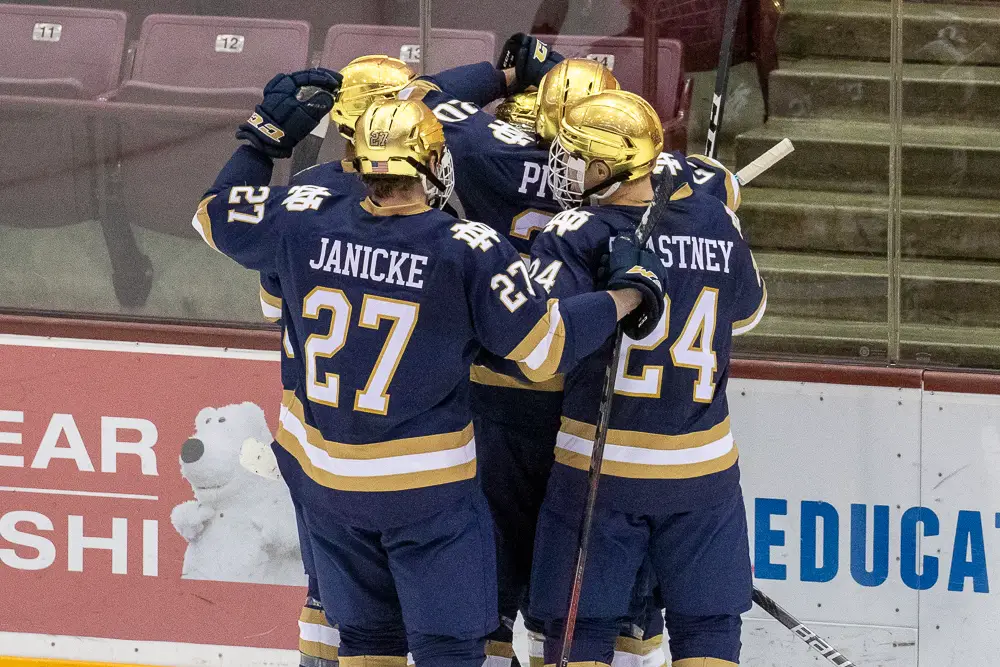
ALBANY, N.Y. — Notre Dame thought it had the winning goal at the end of regulation of Thursday’s Albany Regional semifinal against North Dakota when Adam Karashik put in a rebound.
That’s not how the officials saw it after replay.
The puck appeared to cross the goal line before the green light went on but overhead replays shown on the ESPN broadcast indicated time expired long before that. NCAA rules say the clock, not the green light, is the determining factor.
There was a significant difference between the time on the broadcast clock, which was synced with the green light, and the clock burned into the overhead view.
Notre Dame just missed the buzzer beater to knock out UND pic.twitter.com/js1JL1p1dO
— CJ Fogler AKA Perc70 #BlackLivesMatter (@cjzero) March 25, 2022
After a roughly 12-minute review, referees Geno Binda Jr. and Jeremy Tufts came out of the scorer’s table with a no-goal call. That sent the game into overtime tied 1-1.
Notre Dame won 1:38 into overtime on a Graham Slaggert power-play goal.
A statement from the NCAA read before postgame news conferences reiterated that the green light and broadcast clocks are not official. The scoreboard clock is burned into each camera angle — a source said there were eight views being studied — and that’s the final judge.
The full NCAA statement:
“This statement is regarding the overturned Notre Dame goal at the conclusion of regulation time. The NCAA video replay system includes a burned-in camera view of the scoreboard clock, which is the official timing device.
“As many are aware, the ESPN program feed is not the official time. Additionally, the green light to signal the end of play is not an official part of the timing system.
“The overhead view that includes the scoreboard clock, which is synchronized with the video feed, clearly showed the clock expiring before the shot entered the goal. Therefore the referees determined time had expired and there was no goal scored by Notre Dame.”
There was no immediate indication why the review was as lengthy as it was.


